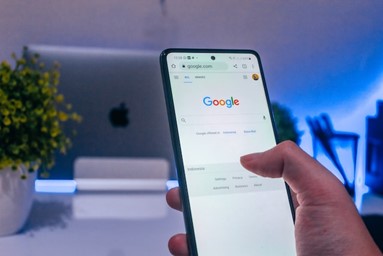Mikael La Ferla is an entrepreneur in the tech industry, focusing on website development, and optimization. In the following article, Mikael LaFerla discusses the profound influence that mobile-friendly design has on the digital landscape, exploring how it shapes user behavior, improves search engine rankings, and ultimately drives business growth. Read on below to uncover the key elements and strategies that can propel your website towards greater success in the mobile-dominated era.
In today's digital age, the shift towards mobile browsing has revolutionized the way people access information and interact with websites. With the widespread use of smartphones and tablets, it has become imperative for businesses and website owners to prioritize mobile-friendly designs to achieve online success.
Mikael La Ferla Says that Mobile Browsing is Taking Over
The mobile revolution has transformed the online landscape. According to recent studies, mobile devices account for a significant portion of web traffic, surpassing traditional desktop usage.
As users increasingly rely on their mobile devices to browse the internet, it is crucial for websites to deliver a seamless and engaging mobile experience. Mikael Laferla notes that this is where mobile-friendly design plays a pivotal role.
Accessiblity
In the realm of web design, mobile accessibility has become an indispensable element that must feature prominently on every designer's checklist. Ensuring that a website is accessible to all, regardless of physical or cognitive abilities, is no longer a mere option—it has become a necessity. By prioritizing this accessibility, businesses can reach and engage with a wider audience, including those who rely solely on mobile devices for online interactions.
Gone are the days when desktop computers and laptops held exclusive dominance over online experiences. In today's digital landscape, where mobile devices have become our constant companions, websites must adapt to accommodate the needs and preferences of users.
That said,
accessible web design is also great for SEO. In recent updates, Google's algorithm favors user experience. A positive mobile user experience for everyone will be seen well - and ranked accordingly.
Responsive Design
Responsive design techniques are at the forefront of mobile-friendly web development. This type of design ensures that websites adapt and respond to different screen sizes and resolutions.
In doing so, sites provide an optimal viewing experience across devices. Mikael La Ferla says that by employing flexible layouts, proportion-based grids, and media queries, responsive design allows websites to seamlessly adjust and deliver content that is visually appealing and easily accessible on any device.
Optimization
Mikael Laferla notes that mobile optimization strategies go beyond responsive design. They involve optimizing various aspects of a website to enhance performance and user experience. This includes optimizing page load times, simplifying navigation, and minimizing the need for excessive scrolling or zooming.
Additionally, leveraging specific features, such as click-to-call buttons or location-based services, can further enhance the user experience, in turn, driving engagement.
Consideration of touch interfaces is another crucial aspect of mobile design elements. Unlike desktop browsing, mobile devices predominantly rely on touch interactions.
Touch-friendly design ensures that buttons, menus, and links are easily tappable and spaced appropriately to prevent accidental clicks. Intuitive gestures, such as swipe or pinch-to-zoom, can also enhance usability and make the browsing experience more intuitive on a mobile device.

 Why Mobile Friendly Design is Important
Why Mobile Friendly Design is Important
The benefits of mobile-friendly design are abundant. First, Mikael Laferla explains that it significantly improves user engagement. Visitors are more likely to stay on a website and explore its content when it is optimized and easy to use - easy navigation, fast load times, and readable text contribute to a positive user experience, leading to increased engagement and reduced bounce rates.
As mentioned earlier, search engines, namely
Google, prioritize mobile-friendly websites in their search results - a callback to their emphasis on user experience. Websites that are not mobile-friendly may experience a steep decline in rankings, potentially impacting their visibility.
Mikael La Ferla reports that thinking of the user's experiences during the web design process benefits everyone across the board.
Conversion Rates
What all websites strive for is that golden conversion rate. Mobile-friendly design has a direct impact on it.
Mikael La Ferla notes that users who have a positive online experience are more likely to take desired actions. Easy to use/navigate sites facilitate purchases, signups, or whatever a brand's specific conversion goal is.
By optimizing the user journey and streamlining the conversion process on mobile devices, businesses can supercharge their conversion rates, driving meaningful results.
Conclusion
The impact of mobile-friendly design on website success cannot be overstated. As the mobile landscape continues to evolve, businesses must adapt and prioritize mobile optimization to remain competitive.
By implementing responsive design techniques, optimizing for mobile devices, and considering touch interfaces, websites can enhance user engagement, improve search engine rankings, and increase conversion rates. Embracing mobile-friendly design is no longer an option but a necessity for businesses aiming to thrive in the digital world.

 Why Mobile Friendly Design is Important
Why Mobile Friendly Design is Important